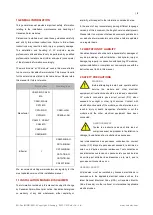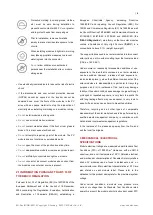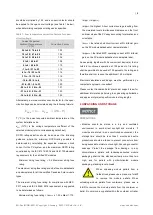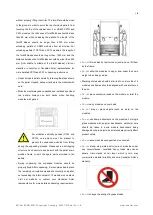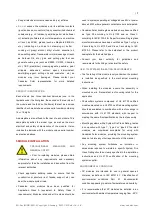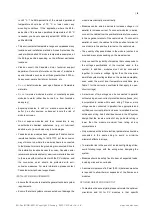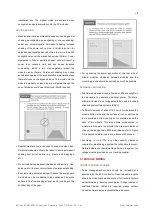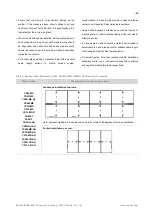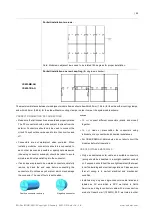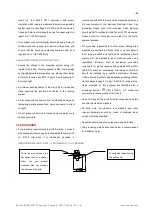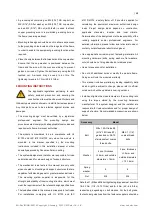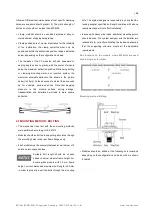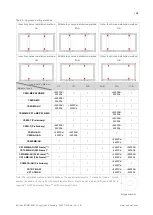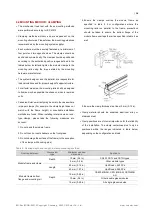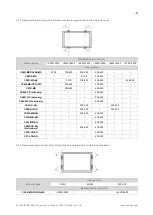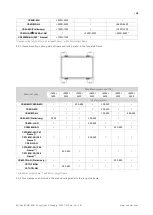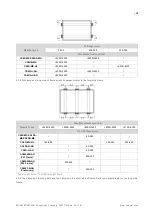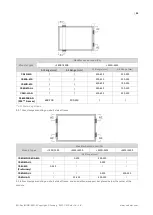
| 5
EN-Rev IM/GN-EN/1.0 Copyright © January, 2023. CSI Solar Co., Ltd.
should be multiplied by 1.25, and a correction factor should
be applied to the open-circuit voltage (see Table 1 below),
when determining component ratings and capacities.
Table 1: Low temperature correction factors for open-
circuit voltage
Lowest Expected
Ambient Temperature
(°C/°F)
Correction Factor
24 to 20 / 76 to 68
1.02
19 to 15 / 67 to 59
1.04
14 to 10 / 58 to 50
1.06
9 to 5 / 49 to 41
1.08
4 to 0 / 40 to 32
1.10
-1 to -5 / 31 to 23
1.12
-6 to -10 / 22 to 14
1.14
-11 to -15 / 13 to 5
1.16
-16 to -20 / 4 to -4
1.18
-21 to -25 / -5 to -13
1.20
-26 to -30 / -14 to -22
1.21
-31 to -35 / -23 to -31
1.23
-36 to -40 / -32 to -40
1.25
Alternatively, a more accurate correction factor for the open-
circuit voltage can be calculated using the following formula:
𝐂
Voc
= 𝟏 − 𝜶
𝑽𝒐𝒄
× (𝟐𝟓 − 𝐓)
T (°C) is the lowest expected ambient temperature at the
system installation site.
α
Voc
(%/°C) is the voltage temperature coefficient of the
selected module (refer to corresponding datasheet).
OCPD rating selection should be done per the following
guidance, where the minimum OCPD rating possible is
determined by calculating the expected maximum circuit
current for the PV system, and the maximum OCPD rating
constrained by the IEC 61215: 2016 and UL 61730 standard
requirements for the certified PV modules.
Minimum string fuse rating < X ≤ Maximum string fuse
rating.
The maximum string fuse ratings can be found in datasheets
and nameplates for all the certified Canadian Solar module
types.
The minimum string fuse rating for compliance with NEC:
2017 code and IEC 62548: 2016 requirement is suggested
to be determined as follows:
Minimum string fuse rating = Isc
STC
x 1.25 x Max (1.175,
Impp
α
÷ Impp
STC
).
Impp
α
= the highest 3-hour current average resulting from
the simulated local simultaneous irradiances on the front
and rear sides of the PV array accounting for elevation and
orientation.
Isc
STC
= the listed short circuit current at 0% bifacial gain
on the PV module datasheet or nameplate label.
Impp
STC
= the listed MPP operating current at 0% bifacial
gain on the PV module datasheet or nameplate label.
An assembly, together with its overcurrent device(s), that is
listed for continuous operation at 100 percent of its rating
shall be permitted to be used at 100 percent of its rating, and
therefore shall not require the additional 1.25 multiplier.
Electrical calculations and design must be performed by a
competent engineer or consultant.
Please contact Canadian Solar’s technical support team for
additional information pertaining to engineering optimization
and approval of project specific module string lengths.
4 UNPACKING AND STORAGE
PRECAUTIONS
Modules should be stored in a dry and ventilated
environment to avoid direct sunlight and moisture. If
modules are stored in an uncontrolled environment, the
storage time should be less than 3 months and extra
precautions should be taken to prevent connectors from
being exposed to moisture or sunlight, like using connector
endcaps. Protect the package from damage. In any
circumstances, pallets with landscape-oriented module
packaging shall not be stacked vertically more than two
high; and for pallets with portrait-oriented module
packaging, stacking is not allowed.
When unloading module pallets from a
flatbed truck, please use a crane or a forklift
to remove the module pallets. When
unloading module pallets from containers, please use a
forklift to remove the module pallets from the container or
trailer. Do not move any pallets within the container or trailer



